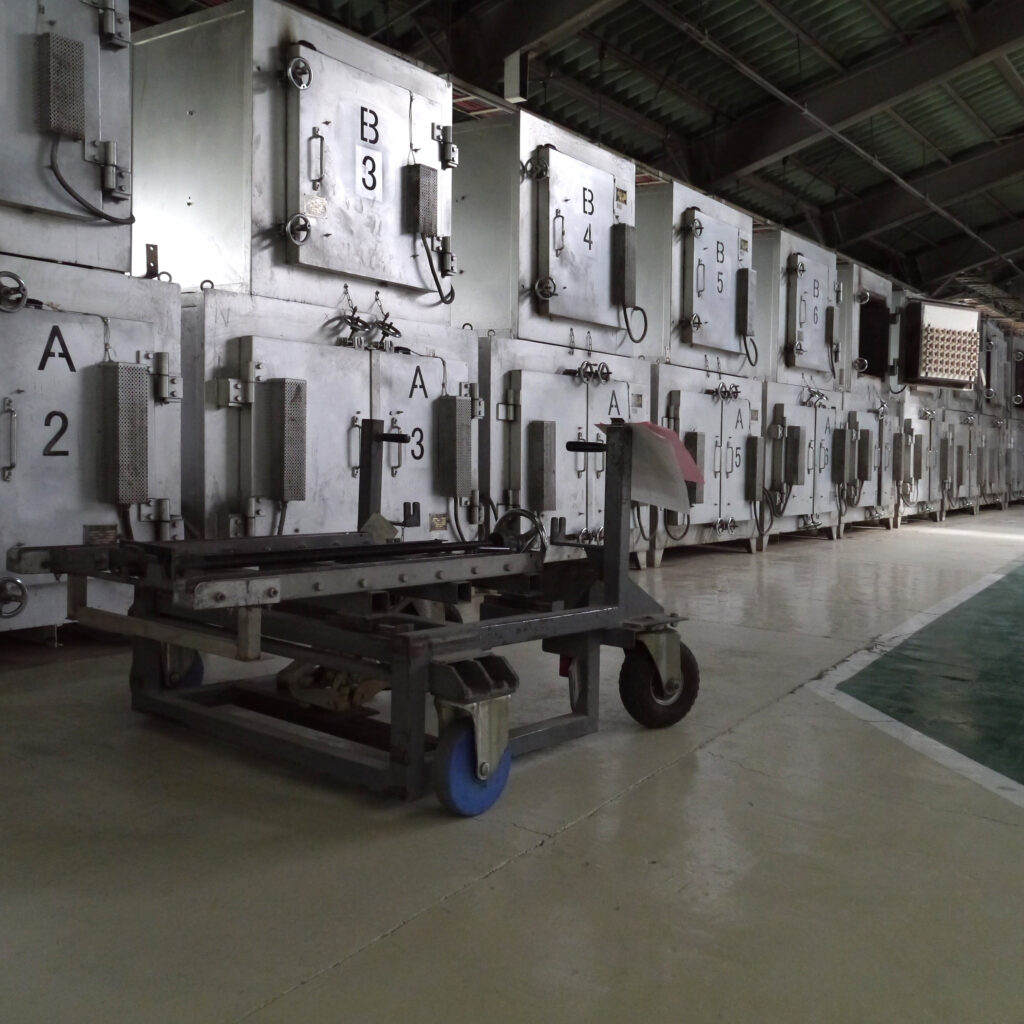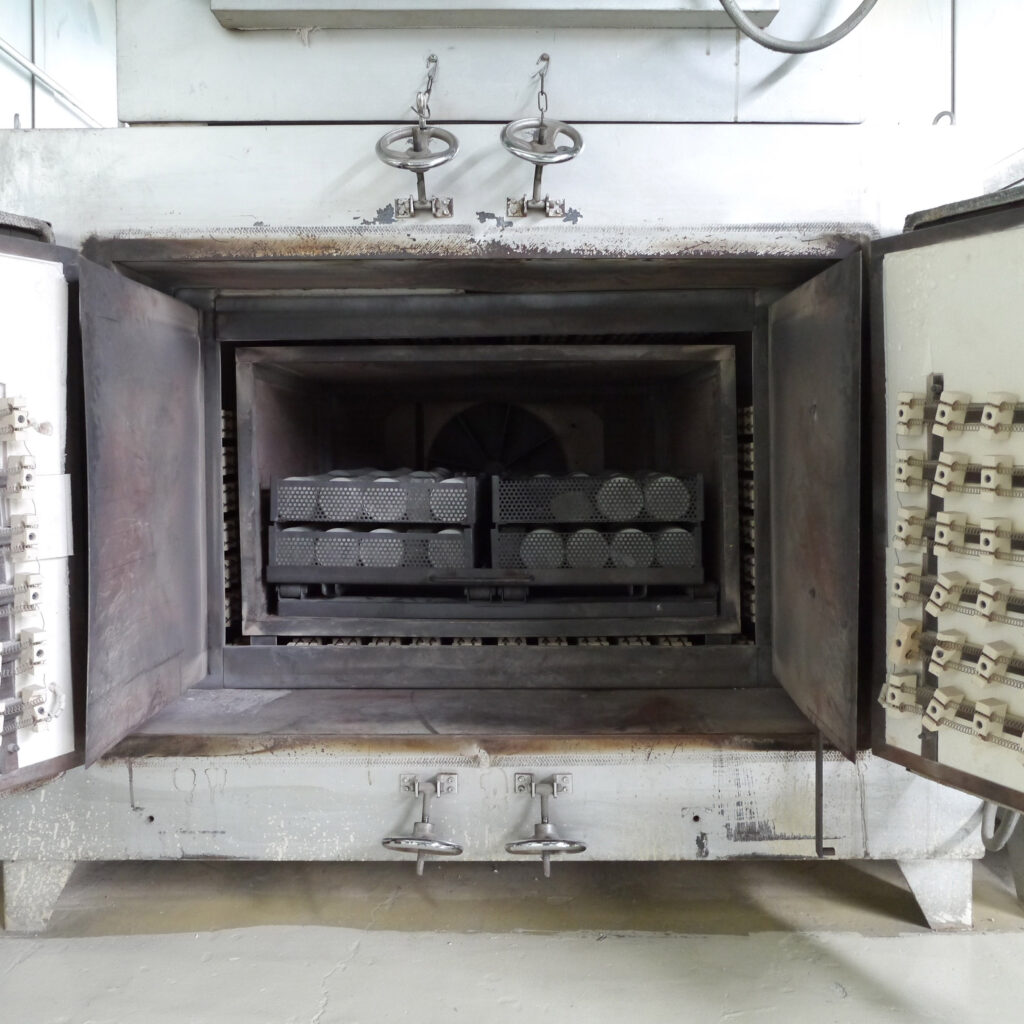Annealing to cure optical glass (2)

In order to match the specific refractive index to each type of optical glass, the annealing process is performed under rigorous temperature management. The above photograph shows pressed lens blanks being loaded into an annealing furnance using a dedicated loading machine. Not only is it necessary to load the same type of glass material into the same annealing furnance, the exact same pot must be used to melt the raw material. Therefore, lens blanks are grouped so that their types and pot numbers can be traced. And, the blanks are processed to the correct refractive index according to an annealing program that is tailored for the features of each group of lenses.

The annealing furnaces are heated for about 6 to 8 hours until reaching the transition point where molecules that compose optical glass are activated, and once that temperature is attained, it is maintained for several more hours. After this process, the temperature pull-down rate is the most crucial point in the annealing program for controlling the temperature inside furnace Basically, the quicker the temperature is pulled down, the lower the refractive index of optical glass. However, it is also necessary to take into consideration not only the basic parameters that can be calculated but also the specific features of each lot of glass material and thermal shock. This requires intricate control and can be achieved only by operators who thoroughly know optical glass.

When lens blanks wake after a long, hot sleep in the furnaces, they obtain accurate refractive indexes in the range that is more rigorous than the tolerance set for general optical glass material. The anneal process has different terms according to the set schedule. After which the lenses are allowed a cooling-down-period of 4 to 9 days to reach room-temperature. If we would aim only at productivity, we could use optical glass of low transition point. And, if we would not vigorously pursue refractive indexes, we could eliminate the process of numerous annealing furnaces and the schedule for annealing. However, that would be incompatible with manufacturing of quality products that Cosina aims at.